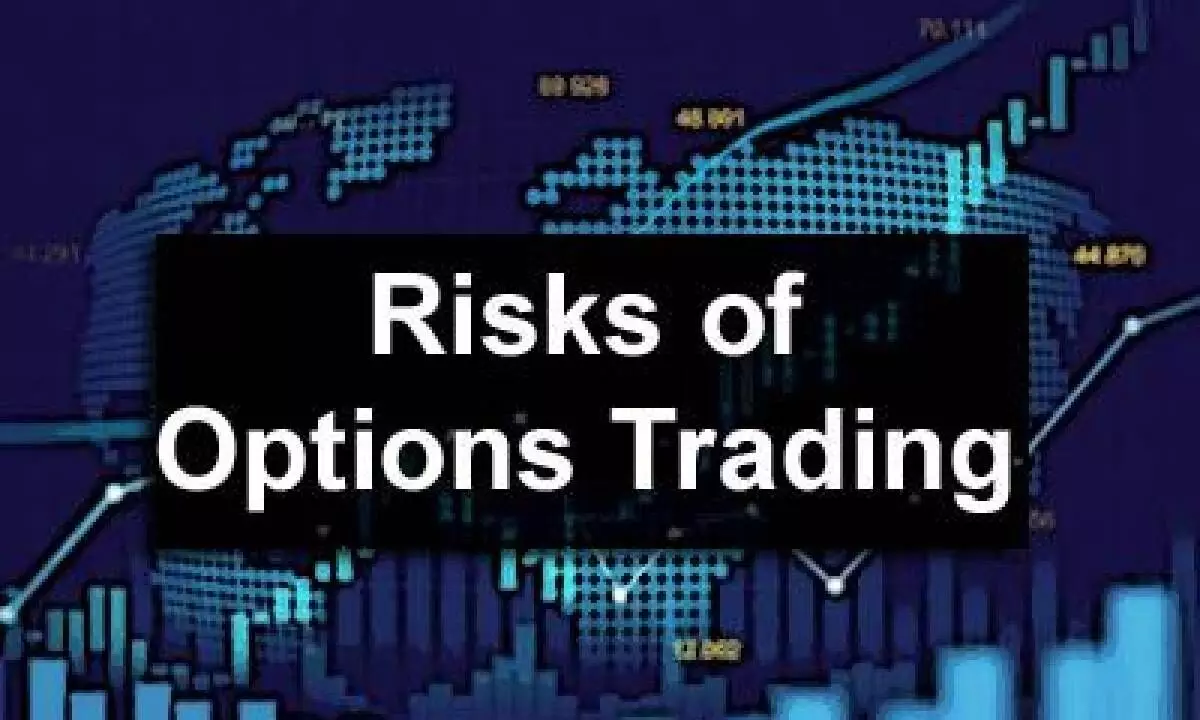Perils of options trading
If things go wrong in options, their entire capital would be wiped out without having any asset
image for illustrative purpose

Investing and trading requires different skill sets. Though many studies have concluded that trading securities have not yielded bigger returns, innumerable try their luck or test their skills every day. Then there’s trading of derivatives ie, futures and options (F&O), which the Oracle of Omaha, Warren Buffet considers as time bombs and views them as the financial weapons of mass destruction, carrying dangers that, while now latent are potentially lethal.
F&O are derivatives are traded on stock exchanges, as the name suggests, derive their value from underlying assets like stocks/shares, ETFs (Exchange Traded Funds), Commodities, Index, etc. These are contracts between two or more parties and its value changes in relation to the value of the underlying asset(s). While there’re many derivatives available, the two commonly referred in the stock market are F&O.
For instance, one were to purchase a futures contract to acquire 100 shares of Infosys at Rs 1,200 each, with a specified date in future, as the contract expires one will receive those 100 shares at the agreed upon price (here Rs 1,200 per share) regardless of the prevailing market value/rate. Even if the price were to trade at Rs 1,250, one will still obtain the shares at Rs 1,200 resulting in a profit of Rs 5,000 in the above example. Conversely, if the stock is trading at Rs 1,150, it results in a loss of Rs 2,000 for the trader.
An options contract, however, as the name suggests gives the trader an option or choice (right) to buy or sell a security at a set price but without any obligation to do so. The seller on the other hand must follow through the contract if the buyer decides to use the option. The option buyer pays a fee (called an option premium) for this privilege. Within the options there are two types, viz, a Call Option and a Put Option.
A call option gives the buyer the right (not obligation) to buy an asset, this is used when the trader is bullish i.e., when they expect the prices to rise. On the other hand, a put option gives a seller the right and not an obligation to sell an asset. A bearish orientation i.e., expectation of a fall in price executes this option. In case the price remains constant i.e., doesn’t move on either side, then the trader could choose to not to exercise the option.
Continuing with our earlier example of Infosys share price at Rs 1,200, if a trader turning bullish on the stock price will opt for a call option with a strike price (ie, the price at which the option is exercised) of say Rs 1,250. This option will expire in a month and costs a premium of Rs 10 per share. As options are traded in lots and the lot size here is 1,600, one would have to buy a minimum of one lot ie, 400 (in this case), so the total premium costs Rs 4,000 (400X10)
Now, let’s say the share price of Infosys increases to Rs 1,300 by the expiration date (i.e., the last Thursday of September) and the trader chooses to exercise the option, which means one can buy the shares at the previously agreed upon strike price of Rs.1250 (and not the current price of Rs 1,300). So, for the lot (options) of 400 shares, one has to spend Rs 5 lakh (1,250X400). One could then sell these shares at the market price of Rs.1300 per share (1,300X400=5.20 lakh) earning a gross profit of Rs 20,000 (5.2 lakh-5 lakh).
However, the trader had already expended Rs 4,000 towards the premium of the options contract. So, the net profit from the transaction is Rs 16,000 (20,000-4,000). But on the contrary, if the share price doesn’t rise over Rs 1,250, the trader is not obliged to exercise the right and the overall loss is limited to the premium ie, Rs 4,000 in the above example.
If one were to observe into the overall equation, options allow one to take an exposure much larger than their capital ie, leverage. In a normal trade, the price fluctuations would create a notional loss or gain depending upon the existing stock, which is an asset. The investor could decide whether to convert these notional gains to real ones by transacting them. However, in options, if things go wrong, their entire capital would be wiped out without having any asset. These instruments were originally used as a hedge against price changes but have now turned a speculative tool to make quick gains, should be avoided from a risk perspective.
A recent report by SEBI (Securities Exchange Board of India) stated that every nine in ten individual traders in equity F&O segment suffered losses in the FY 2021-22. The findings part of the study conducted by the regulator analysed the trading by individual investors over the net profit or loss encountered by them in the equity F&O segment for the period of FY19 and FY22. The study considered the sample of all the individual clients of all the top 10 stockbrokers which accounts for 67 per cent of the overall individual client turnover in the equity F&O segment during the FY21-22 period.
Only 11 per cent of the individual traders in F&O segment made a profit with an average gain of Rs 1.5 lakh in FY22. The percentage dropped marginally to 10 per cent for active traders, the average profit made by them went up to Rs 1.9 lakh. This has made the regulator to bring restrictions further on the way risk disclosures are made by brokers and exchanges to investors.
(The author is a co-founder of “Wealocity”, a wealth management firm and could be reached at [email protected])

